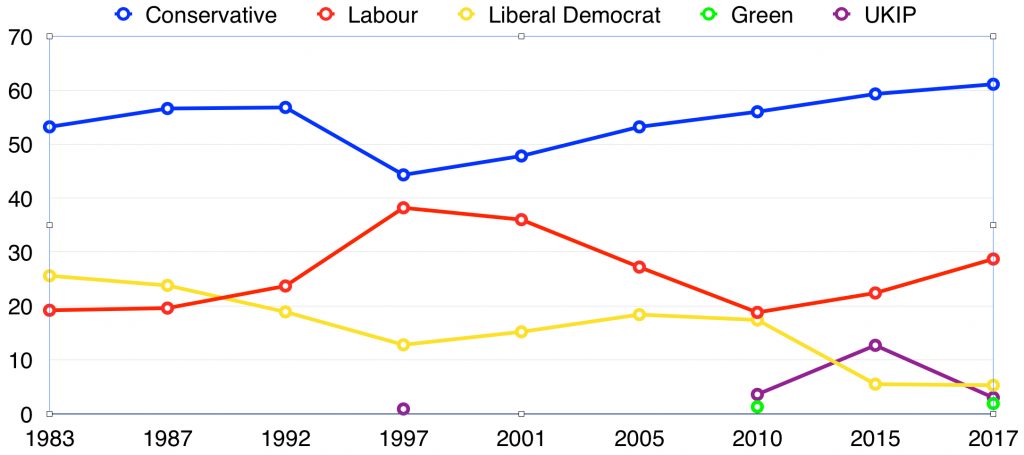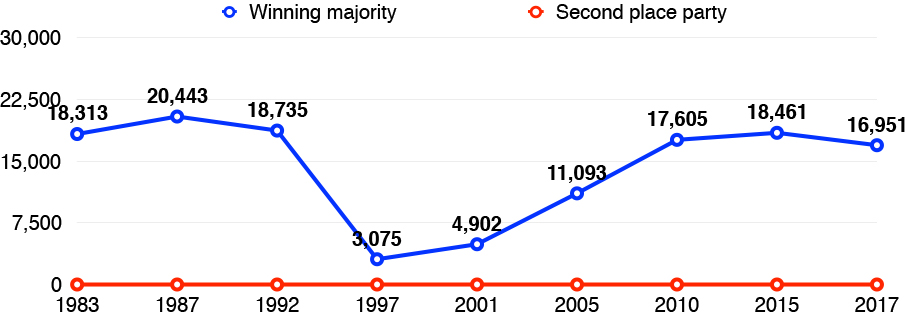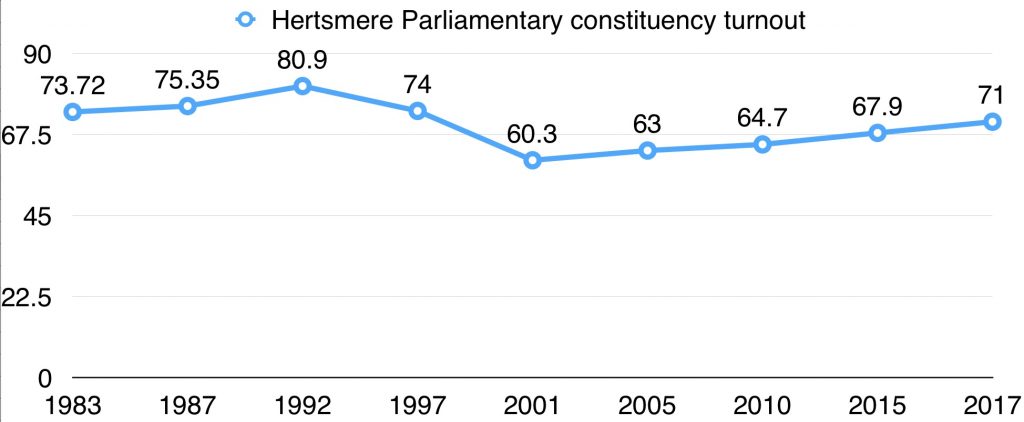 That’s 34 years of Hertsmere General Election voting data, from the Thatcher high water mark of 1983 (the biggest landslide since Labour’s 1945 win, you’ll remember) to 2017’s most surprising result, via that other high water mark – Blair’s even bigger 1997 landslide.
That’s 34 years of Hertsmere General Election voting data, from the Thatcher high water mark of 1983 (the biggest landslide since Labour’s 1945 win, you’ll remember) to 2017’s most surprising result, via that other high water mark – Blair’s even bigger 1997 landslide.
The Hertsmere Parliamentary constituency has only existed since 1983. Before it there was a constituency called South Hertfordshire that itself only lasted for three general elections. Cecil Parkinson, a close ally of Margaret Thatcher, held the seat from 1983, when he also ran the extraordinarily successful Conservative national campaign. He was replaced, after a particularly egregious scandal, for the 1992 election, by James Clappison, who went on to be a popular and hard-working constituency representative for five Parliamentary terms.
Clappison was summarily dumped by his party for the 2015 election, though, to make room for David Cameron adviser Oliver Dowden. Dowden himself has spent the last two years building a reputation for hard work and commitment to the constituency and he has, of course, now been re-elected with a higher share of the vote, although a slightly smaller majority.
What all the results in the chart have in common, of course, is the winner. Hertsmere has been a comfortably Conservative seat throughout. Even the Blair revolution, in which Labour took 418 Parliamentary seats, the largest number ever held by a UK party, couldn’t (quite) touch that and, although Fiona Smith has lifted the party further from that dreadful 2010 result, the Corbyn uprising has done essentially nothing to close the gap.
In some ways, the Liberals’ trajectory in the constituency since 1983 is the grimmest of all – steadily falling from a quarter of the vote and second place ahead of Labour – to little more than 5% this year. That’s a snapshot of the national challenge for Farron and his party.
This chart shows the Conservatives’ winning majority in Hertsmere, over the 34-year period. You can see just how close things got in 1997. It’s fascinating to note how long it’s taken the party to recover from that enormous electoral shock.

And this chart shows turnout over the same period.

To keep the top chart simple, I’ve left out the minor parties – the levitating transcendentalists from the Natural Law Party (please watch their 1994 European Parliamentary election broadcast); James Goldsmith’s Referendum Party, whose programme looked pretty kooky at the time but now looks like a model of sanity; the Independent Communist candidate whose vote exceeded 2% back in 1983; Arthur Scargill’s Socialist Labour Party and the BNP, whose Daniel Seabrook ran once in 2010 before being rendered entirely irrelevant by UKIP. The smaller-party numbers are all included in the raw data, though, in case you’re interested.
(sources: Wikipedia and BBC)
